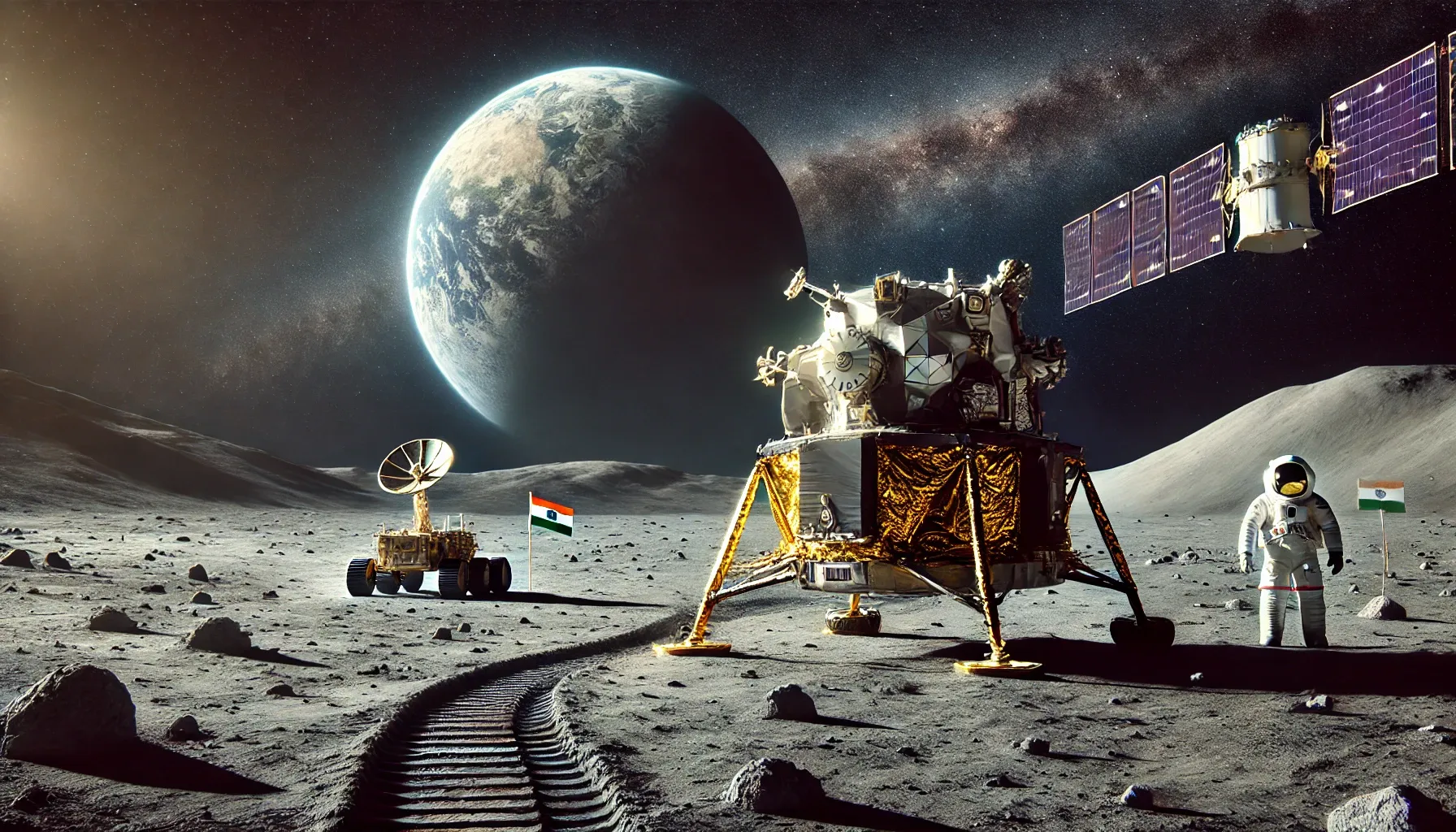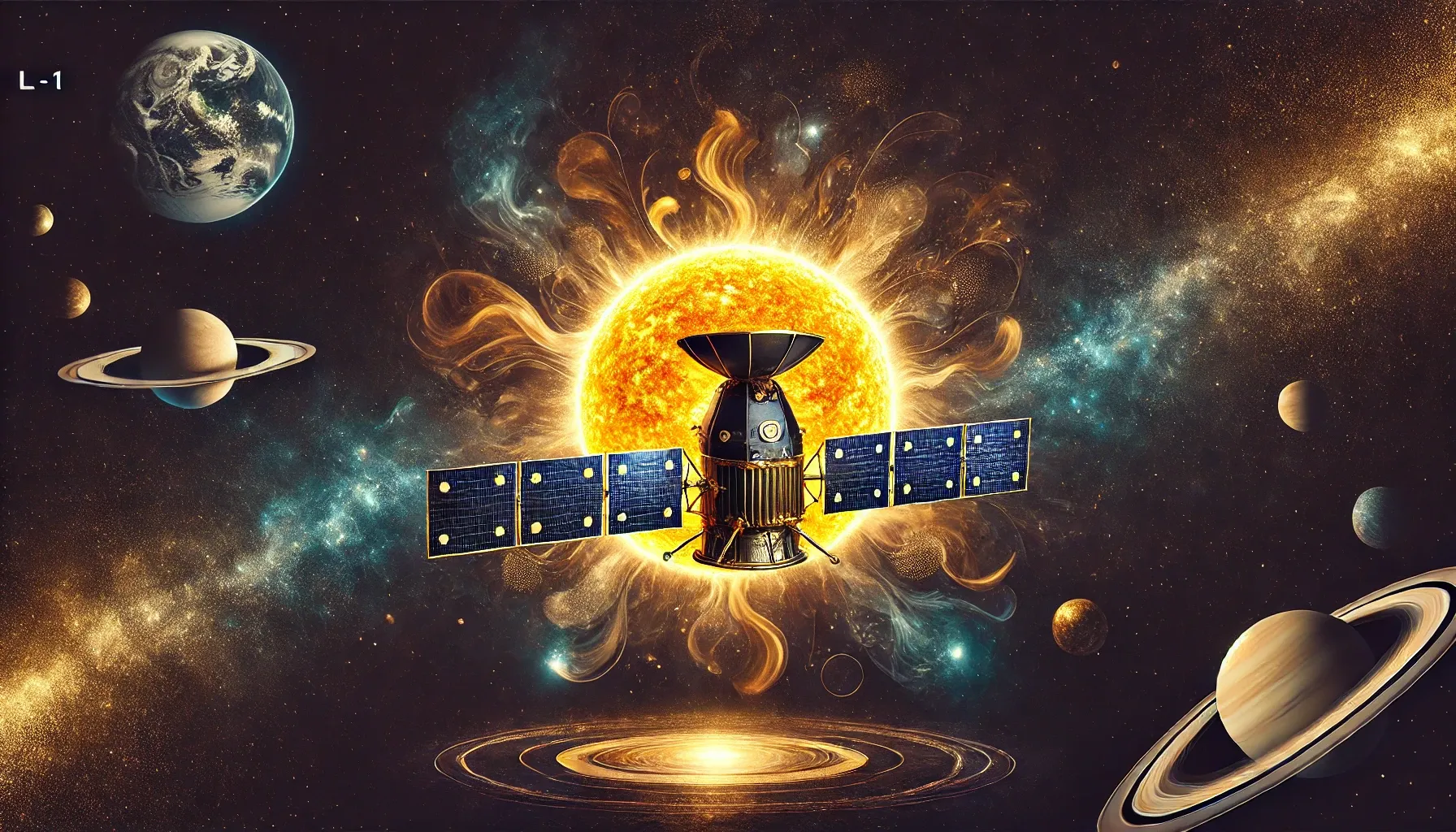UPSC
The Hindu Briefs
Chandrayaan-3’s ChaSTE: Pioneering Lunar Thermal Research
Last Updated
3rd April, 2025
Date Published
3rd April, 2025
Share This Post With Someone

This article from The Hindu, dated April 2, 2025, details the success of the Chandra’s Surface Thermophysical Experiment (ChaSTE) aboard Chandrayaan-3, marking India’s first successful thermal probe deployment on a celestial body. It underscores ISRO’s technological prowess and scientific contributions to lunar exploration, offering valuable insights into space technology and planetary science for aspirants preparing for competitive exams.

Key Points
- Chandrayaan-3 Landing: The Vikram lander of Chandrayaan-3 successfully landed on the Moon on August 23, 2023, near the lunar south pole.
- ChaSTE Deployment: Post-landing, the ChaSTE thermal probe, stowed in Vikram’s panels, was deployed using motors to penetrate the lunar soil.
- First Successful Probe: ChaSTE became the first instrument to measure in-situ temperatures near the Moon’s south pole, overcoming challenges faced by previous missions.
- Probe Design: Equipped with 10 temperature sensors spaced 1 cm apart along its length, ChaSTE reached a depth of 10 cm into the lunar soil.
- Operational Period: It collected temperature data from August 24 to September 2, 2023, during the Chandrayaan-3 mission.
- Mechanism: A rotation-based deployment pushed the probe into the soil, with sensors detecting surface contact and resistance to confirm depth.
- Scientific Milestone: Data revealed higher-than-expected water ice prevalence on the Moon, enhancing understanding of lunar resources.
- Comparison with Past Missions: Unlike the European Space Agency’s Philae lander (2014) and NASA’s InSight (2018), which struggled with soil penetration, ChaSTE succeeded due to its rotating mechanism.
- Philae’s Failure: The Philae lander’s MUPUS instrument, intended to measure comet 67P’s temperature, failed to penetrate beyond a few centimeters after bouncing twice on landing in 2014.
- InSight’s Struggle: NASA’s HP3 instrument on Mars, designed to dig 35 cm, only reached a shallow depth due to low friction, with sensors on a tether failing to collect data.
- ChaSTE’s Innovation: Principal investigator Durga Prasad K. from the Physical Research Laboratory, Ahmedabad, highlighted the rotating device as key to ChaSTE’s success.
- Temperature Findings: The probe recorded a peak surface temperature of 355 K (±0.5 K), higher than the predicted 330 K (±3 K), indicating significant spatial variability at high latitudes.
- Implications: These findings are crucial for future lunar exploration, suggesting thermal considerations for habitat design and mission planning.
Glossary
- Chandrayaan-3: India’s third lunar mission, achieving a soft landing near the Moon’s south pole in 2023.
- ChaSTE: Chandra’s Surface Thermophysical Experiment, a thermal probe measuring lunar soil temperature and properties.
- Vikram Lander: The landing module of Chandrayaan-3 that deployed the ChaSTE probe and Pragyan rover.
- Lunar South Pole: A region near the Moon’s southern extremity, targeted for its potential water ice deposits.
- In-Situ Measurement: Direct data collection at the site, as performed by ChaSTE on the lunar surface.
- Thermal Probe: An instrument designed to measure temperature and thermal conductivity in soil.
- Water Ice: Frozen water detected in lunar soil, vital for future exploration and habitation.
- ISRO: Indian Space Research Organisation, the agency behind Chandrayaan-3’s success.
- Regolith: The loose, fragmented material covering the Moon’s surface, studied by ChaSTE.
- Spatial Variability: Differences in temperature and properties across small distances, observed at high lunar latitudes.
Link To The Original Article – https://www.thehindu.com/sci-tech/science/chandrayaan-3-chaste-instrument-first-successful-thermal-probe-celestial-body/article69403476.ece

UPSC
The Hindu Briefs

UPSC
The Hindu Briefs